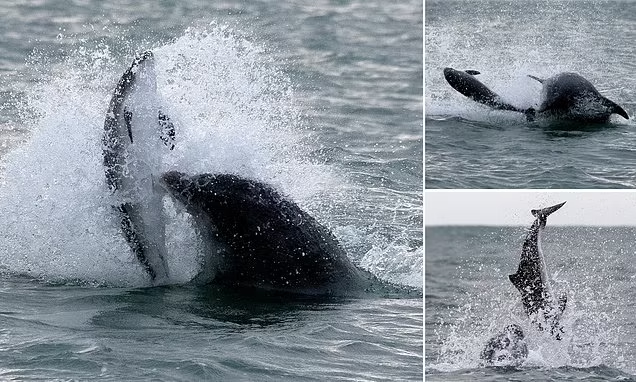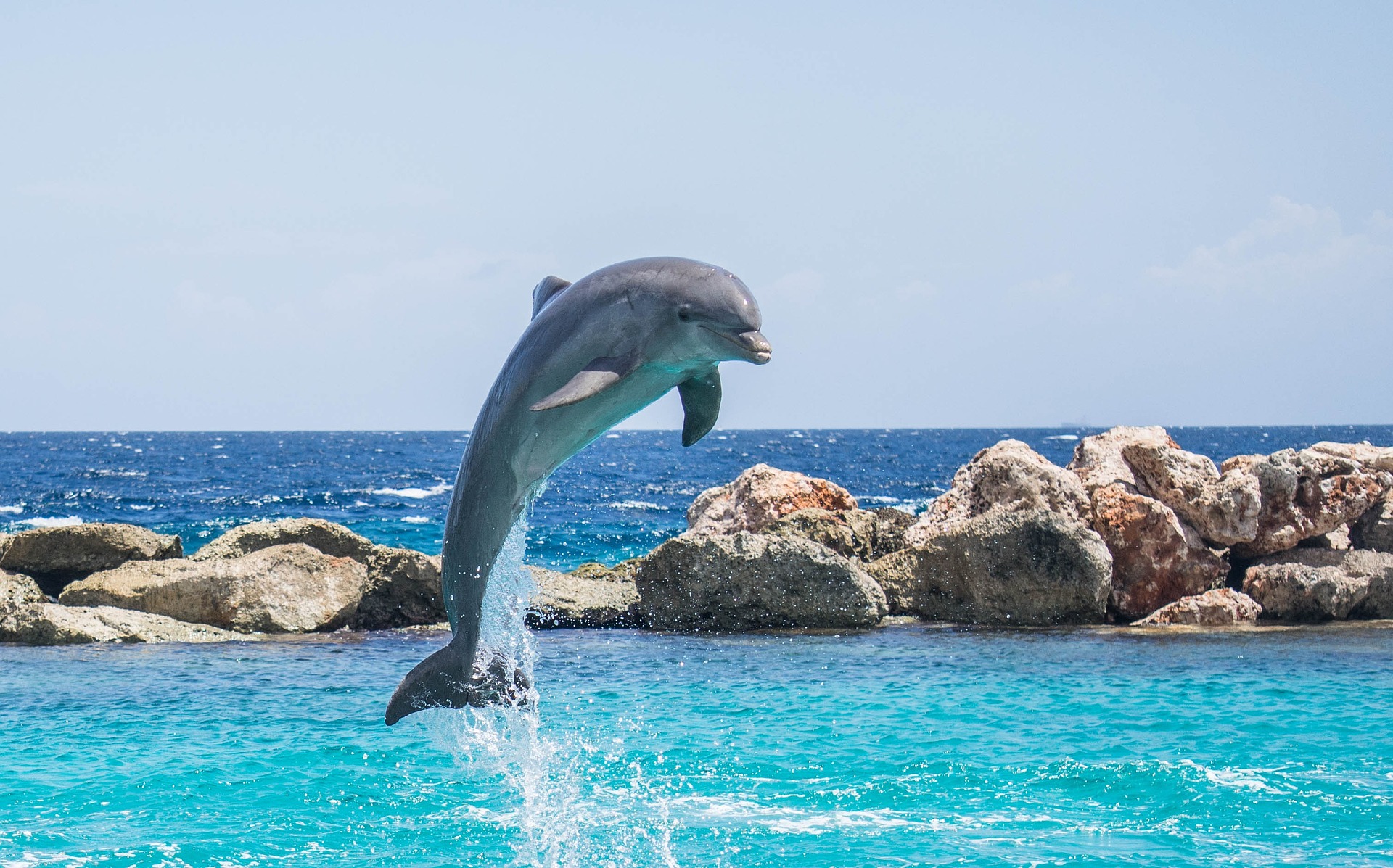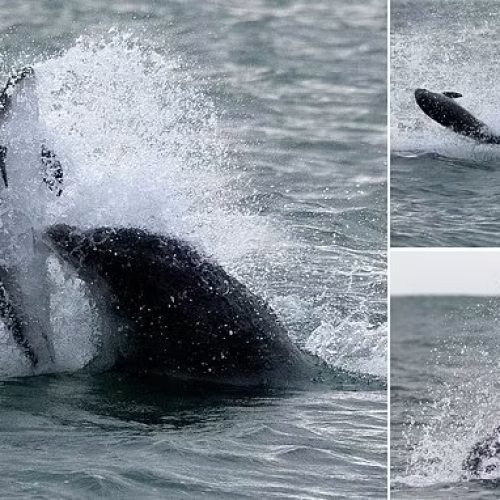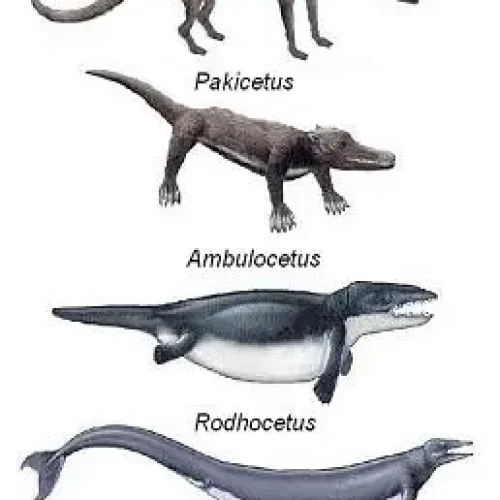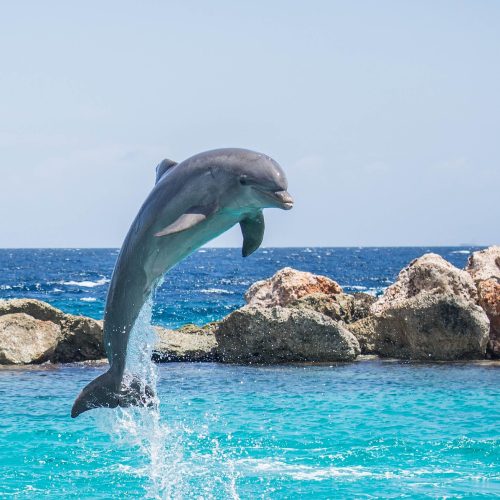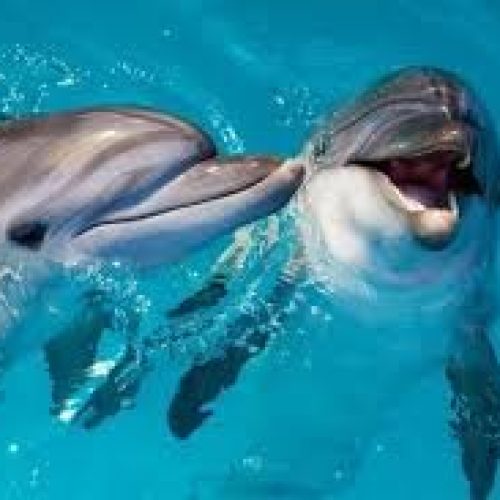In the tumultuous waters of the North Pacific, a legendary killer whale named Granny has weathered the decades with grace and resilience.
A true matriarch of the southern resident killer whale population, Granny has been observed in her natural habitat for over 40 years, becoming the oldest killer whale ever known. Her incredible longevity, exceeding a century, raises fascinating questions about the secrets of dolphin longevity and the lessons we can learn from these magnificent marine creatures.
Dive with us into Granny’s remarkable story and explore the factors that contribute to dolphins’ exceptional longevity.
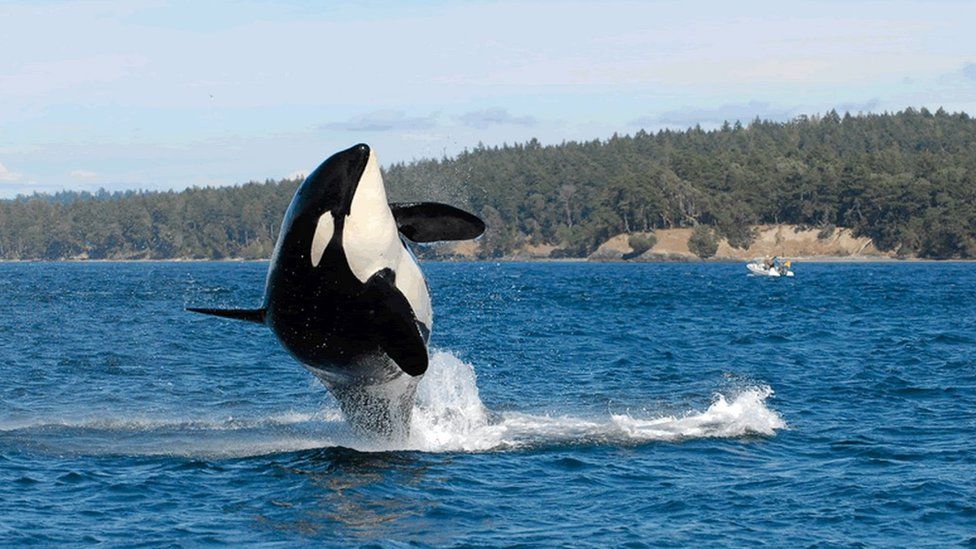
GRANNY: THE WORLD’S OLDEST KNOWN ORCA
Granny, a female orca also known as J2, was an iconic and beloved member of the endangered Southern Resident killer whale population. Born around 1911, Granny lived an astonishing life that spanned over a century, making her the oldest known orca in the world.
Researchers estimate that Granny was born sometime between 1911 and 1914, based on her size and the presence of her offspring when she was first identified in 1976.
This means that at the time of her passing in 2016, Granny was likely over 100 years old – a truly remarkable feat for a wild orca.
To put this into perspective, female orcas in the wild typically live between 50 and 80 years, with a maximum lifespan of around 90 years. Granny’s longevity is a testament to her resilience, adaptability, and the favorable conditions of her habitat.
Granny was first identified by researchers in 1976 as part of a photo-identification study of the Southern Resident killer whale population. For over 40 years, she was regularly spotted in the coastal waters of Washington State and British Columbia, often leading her family group, known as J pod.
Her distinct saddle patch and dorsal fin shape made her easily recognizable to researchers and whale watchers alike. Granny’s consistent presence in these waters over such a long period provided valuable insights into orca behavior, social structure, and population dynamics.
As the oldest member of J pod and the Southern Resident population as a whole, Granny played a vital role as a matriarch. Orca societies are highly matrilineal, with females leading their family groups and passing down knowledge to younger generations.
Granny’s experience and wisdom likely contributed to the survival and well-being of her pod. She would have known the best hunting grounds, taught younger orcas how to catch prey, and provided guidance during times of hardship or environmental change.
Her presence also had a stabilizing effect on the social structure of the Southern Resident population. Orcas are known to form strong, lifelong bonds with their family members, and Granny’s longevity allowed multiple generations to benefit from her leadership and knowledge.
FACTORS CONTRIBUTING TO DOLPHIN LONGEVITY
While Granny’s exceptional lifespan is rare, there are several factors that contribute to the longevity of dolphins and orcas in the wild. Understanding these factors can provide valuable insights into the health and conservation of these remarkable marine mammals.
A Diet Rich in Nutrient-Dense Prey
One of the key factors in dolphin longevity is their diet. Dolphins and orcas are apex predators, feeding on a variety of nutrient-dense prey such as fish, squid, and other marine mammals.
This high-quality diet provides them with the energy and nutrients necessary for growth, reproduction, and maintenance of body functions.
Salmon: A Superfood for Dolphins and Orcas
For the Southern Resident killer whales, including Granny and her family, Chinook salmon is a particularly important prey species. These salmon are rich in omega-3 fatty acids, which have been linked to improved cardiovascular health, brain function, and immune system performance in both humans and marine mammals.
The Importance of a Varied Diet
In addition to salmon, a varied diet that includes other fish species and even marine mammals ensures that dolphins and orcas receive a wide range of nutrients. This dietary diversity helps prevent nutritional deficiencies and supports overall health and longevity.
Strong Social Bonds and Family Structures
Dolphins and orcas are highly social animals, living in close-knit family groups that provide support, protection, and knowledge sharing. These strong social bonds are believed to contribute to their longevity by reducing stress and promoting cooperative behaviors.
The Role of Matriarchs in Dolphin Societies
As demonstrated by Granny’s long life and leadership, matriarchs play a crucial role in dolphin and orca societies. These experienced females guide their families to food sources, teach hunting techniques, and provide social stability.
The presence of a matriarch is associated with increased survival rates for calves and the overall health of the pod.
Cooperative Hunting and Shared Knowledge
Dolphins and orcas often hunt cooperatively, working together to herd and capture prey. This behavior not only increases the efficiency of their hunting efforts but also allows for the sharing of knowledge between generations.
By learning from older, more experienced individuals, younger dolphins and orcas can acquire the skills necessary for long-term survival.
Low Stress Levels and a Peaceful Lifestyle
Unlike many land-based mammals, dolphins and orcas live in an environment that is relatively free from chronic stressors. They do not have to worry about finding shelter, competing for mates, or defending territories in the same way that terrestrial animals do.
This relatively peaceful lifestyle may contribute to their longevity by reducing the harmful effects of chronic stress on their bodies.
Absence of Predators and Human Threats
As apex predators, dolphins and orcas have few natural predators in their environment. This absence of constant threat allows them to allocate more energy towards growth, reproduction, and body maintenance, rather than defense and survival.
However, human activities such as pollution, overfishing, and habitat destruction can pose significant threats to dolphin and orca populations.
The Southern Resident killer whales, for example, are endangered due to a combination of factors, including a decline in Chinook salmon populations, exposure to toxins, and vessel disturbance.
The Benefits of Living in a Protected Environment
Efforts to protect the habitats and food sources of dolphins and orcas can have a positive impact on their longevity. The establishment of marine protected areas, fishing regulations, and vessel speed limits can help reduce the human-induced stressors on these populations, allowing them to thrive and live longer, healthier lives.
Granny’s remarkable lifespan is a testament to the resilience and adaptability of these magnificent creatures, as well as the importance of protecting their habitats and food sources.
By understanding the factors that contribute to dolphin and orca longevity, we can work towards ensuring that future generations have the opportunity to witness the incredible lives of individuals like Granny.
SECRETS OF AGING GRACEFULLY: LESSONS FROM CENTENARIAN DOLPHINS
Centenarian dolphins are known for their vibrant and active lifestyles, even in their golden years.
These marine mammals continue to explore their environments, interact with their social groups, and engage in playful behaviors well into their advanced age. By staying physically and mentally active, they maintain their vitality and zest for life.
One of the key secrets to the longevity of centenarian dolphins is their emphasis on play and cognitive stimulation. They engage in a variety of games, such as chasing each other, playing with seaweed, and even creating their own toys from objects they find in their environment. These playful activities not only provide entertainment but also keep their minds sharp and engaged.
Exercise is crucial for maintaining physical health and preventing age-related decline in dolphins. Centenarian dolphins are known to swim vast distances each day, often covering several miles in search of food or socializing with their pod. This regular physical activity helps maintain their cardiovascular health, muscle strength, and overall fitness.
Another remarkable trait of centenarian dolphins is their ability to adapt to changing environmental conditions.
Over the course of their long lives, they witness fluctuations in water temperature, prey availability, and habitat quality. By being flexible and adjusting their behaviors accordingly, they demonstrate incredible resilience in the face of challenges.
Centenarian dolphins have weathered many storms throughout their lives, both literally and figuratively. They have survived natural disasters, predator attacks, and even human-induced threats such as pollution and entanglement in fishing gear. Their resilience and ability to bounce back from adversity are testaments to their strength and adaptability.
In dolphin societies, the wisdom and knowledge of elder individuals are highly valued. Younger dolphins often look to their elders for guidance, learning important life skills such as hunting techniques, navigation, and social dynamics.
By passing down their accumulated knowledge to future generations, centenarian dolphins contribute to the long-term survival and success of their species.
THE OLDEST DOLPHINS IN CAPTIVITY: A CONTROVERSIAL TOPIC
While some of the oldest known dolphins have been found in captivity, the topic of captive dolphin longevity remains highly controversial.
Proponents argue that the controlled environment and veterinary care provided in captivity can extend the lifespan of dolphins. However, critics point out that the artificial conditions and limited space in captivity can have detrimental effects on dolphin health and well-being.
Dolphins in captivity often face a range of stress-related health issues that can impact their longevity.
The confined spaces, lack of natural stimuli, and disruption of social bonds can lead to chronic stress, compromised immune function, and behavioral abnormalities. These factors can contribute to a shorter lifespan compared to their wild counterparts.
In the wild, dolphins have vast expanses of ocean to explore and engage in complex social interactions with their pod members. However, in captivity, they are confined to small tanks and often separated from their natural social groups.
This limited space and social isolation can have profound effects on their physical and psychological well-being, potentially shortening their lifespan.
While some individual dolphins in captivity have reached impressive ages, it is important to consider the overall longevity of dolphins in the wild.
Studies have shown that wild dolphins can live for several decades, with some species having an average lifespan of 40 to 50 years. In comparison, the lifespan of captive dolphins is often shorter, with many not surviving past their 20s or 30s.
The practice of keeping dolphins in captivity raises significant ethical concerns.
Many animal welfare organizations and activists argue that the confinement of these highly intelligent and social creatures is inherently cruel and goes against their natural instincts and needs. The debate surrounding the ethics of captive dolphin facilities continues to be a contentious issue.
In response to the growing concerns about the welfare of captive dolphins, there has been a push for the creation of retirement sanctuaries and rehabilitation centers.
These facilities aim to provide a more natural and spacious environment for dolphins who have spent their lives in captivity, allowing them to live out their remaining years in a setting that prioritizes their well-being and allows for a gradual transition back to the wild when possible.
SUPPORTING DOLPHIN LONGEVITY THROUGH CONSERVATION EFFORTS
To support the longevity of wild dolphin populations, it is crucial to protect their critical habitats and migration routes.
This involves preserving coastal areas, estuaries, and offshore regions that are essential for dolphin feeding, breeding, and social interactions. By safeguarding these habitats, we can ensure that dolphins have access to the resources they need to thrive and maintain their long lifespans.
Pollution and marine debris pose significant threats to dolphin health and longevity.
Chemicals, plastics, and other pollutants can accumulate in dolphin bodies, leading to a range of health issues, including compromised immune function, reproductive problems, and even premature death. Efforts to reduce pollution and clean up marine environments are vital for supporting dolphin longevity.
Entanglement in fishing gear is a major cause of injury and mortality among dolphins.
Abandoned or discarded nets, lines, and other fishing equipment can wrap around dolphins’ bodies, causing severe cuts, infections, and impaired movement.
Implementing measures to prevent entanglement, such as using dolphin-friendly fishing practices and properly disposing of gear, can help protect these marine mammals and support their long-term survival.
Overfishing and unsustainable fishing practices can disrupt the delicate balance of marine ecosystems, affecting the availability of prey species that dolphins rely on.
By promoting sustainable fishing practices, such as using selective fishing methods, respecting catch limits, and avoiding bycatch, we can help ensure that dolphin populations have access to a stable food supply, which is crucial for their longevity and overall health.
Whale watching and dolphin-focused ecotourism can be powerful tools for raising awareness about the importance of dolphin conservation. However, it is essential that these activities are conducted responsibly, minimizing disturbance to the animals and their habitats.
Guidelines such as maintaining a safe distance, limiting the number of boats, and avoiding chasing or harassing dolphins can help ensure that ecotourism supports rather than hinders dolphin longevity.
In this article

